watch now!
A place where I discuss all things related to toddlers and motherhood!
Subscribe to my Youtube channel
As a clinical psychologist, published author, and mother to two cheeky young children, I get it. I’ve spent YEARS researching and filtering through the noise online, so you don’t have to.
PARENTING TIPS
POTTY TRAINING
ANTIRACISM
PLAY
Blog Topics
SIBLING RIVALRY
SCREEN TIME
TANTRUMS
DISCIPLINE
Hi I'm Dr. Jazmine
How to Help Your Child Manage Their Anger
topics:
One of my most asked questions is how to handle aggressive behaviors.
Whether that’s hitting, biting, kicking, scratching, pinching, I’ll spill the tea on how to handle these behaviors. So don’t worry, I’ve got you.
Keep in mind, I’m talking about younger kids – think infancy to age 5 – especially toddlers and preschoolers.
We’re going to dive into common reasons little ones get aggressive in the first place and then what you can do in those moments to help them and help yourself through these times of stress.
Because let’s keep it real. It’s stressful, right? It’s stressful when our kid gets aggressive towards us. There’s no way around that.
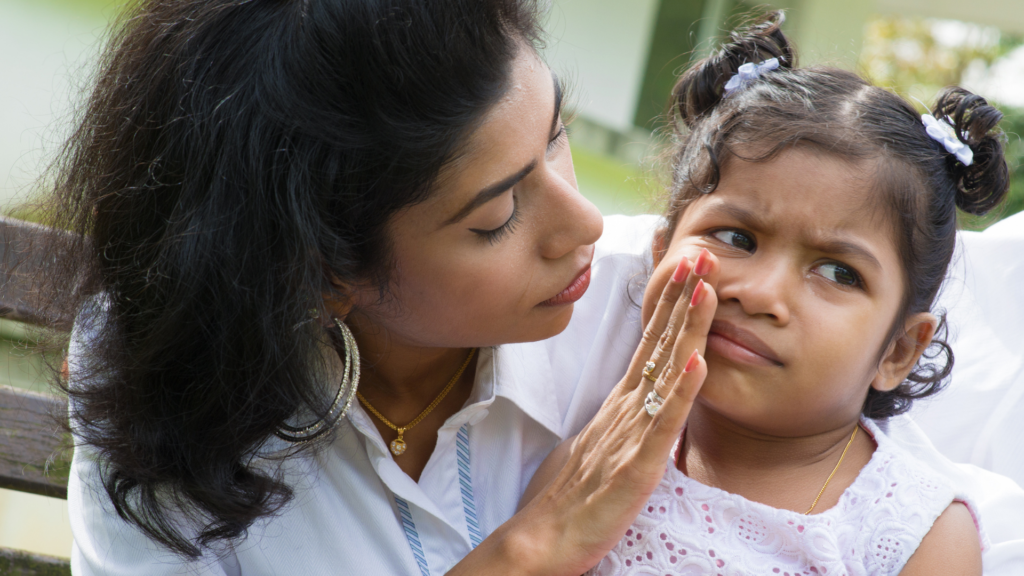
Common reasons why your toddler or preschooler uses aggressive behaviors
Nothing is more triggering than when your kid – out of frustration – lashes out at you and hurts your body. You immediately go into defense mode, and you may want to meet that aggression with aggression.
I get that this is triggering, and it triggers our stress response.
So I want to break down the common reasons why children get aggressive in the first place.
What I want you to keep in mind is, especially with your child’s developing brain, they are easily emotionally flooded.
The part of their brain (their frontal cortex) that’s involved in rational thought, problem-solving, logical thinking, all that higher-order thinking is still developing. It takes until they’re young adults – like age 25 or even later – for this higher-order brain to fully develop.
So you have to look at your two-year-old, three-year-old, four-year-old as having an immature brain.
What happens is when they’re met with frustration where they’re not allowed to do what they want to do, they’re going to have big feelings. Whether somebody doesn’t want to give them a toy, or you set a boundary and you’re like, “Not right now, sweetie. We’re not going to have candy before dinner.”
Also, they don’t have a lot of the skills to sit back and say, “Okay, what am I feeling right now? Okay, I’m feeling sad. Let me solve the problem.” And then they don’t have that communication to say, “Hey, Mom, I’m feeling sad right now. I need a hug, okay?”
That’s way over their head. And we can’t expect them at these younger ages to do that unless they’ve had a lot of practice.
Emotional regulation takes a lot of practice. This is a skill that needs time to develop, like any other skill like walking, talking, potty training. It takes time to develop that skill.
It also takes a lot of modeling and a lot of patience (let’s be real).
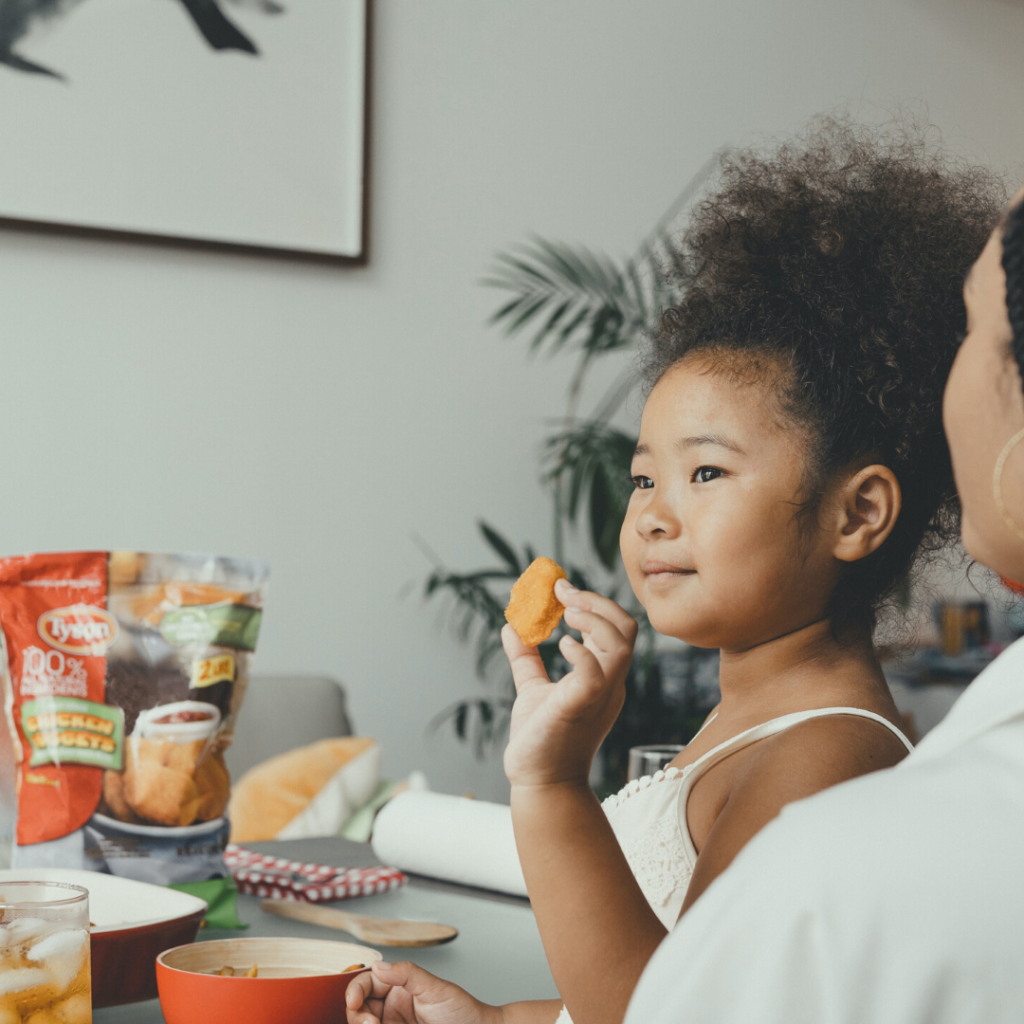
A common reason why kids lash out in anger is because of unmet needs. Maybe they’re…
- Hungry
- Tired
- Overstimulated
- Have a need for connection or affection that’s not being met
When they get aggressive and they get dysregulated, you’re going to want to go down this list. If you need to, keep track of each of these to make it easier to remember.
The other thing is they’re emotionally flooded and frustrated. And commonly children lash out since they need to exert that energy.
That doesn’t mean we don’t want to work with them on finding other ways to handle that aggressive behavior. This means we give them a little grace for the way they act and not take it so personally.
If we view aggressive behaviors with our adult brain, then it’s easy to get ticked off and respond in anger because we’re viewing that behavior as threatening, as manipulative, as your child exerting power over you, and you need to exert your power and get your authority back.
If you’re running into these misconceptions, it’s very easy to get ticked off. Am I right?
And trust me, I’ve been there too.
3 ways to help manage your child’s aggression
First, regulate yourself
The first thing you’re going to want to do is to regulate your body.
Again, because aggression is so triggering, you’re going to need to take a step back.
If you’re finding yourself wanting to meet that anger with anger, that’s your sign.
Whatever you want to say or need to say during those moments, say them to yourself so that you don’t take it personally and you don’t react out of anger.
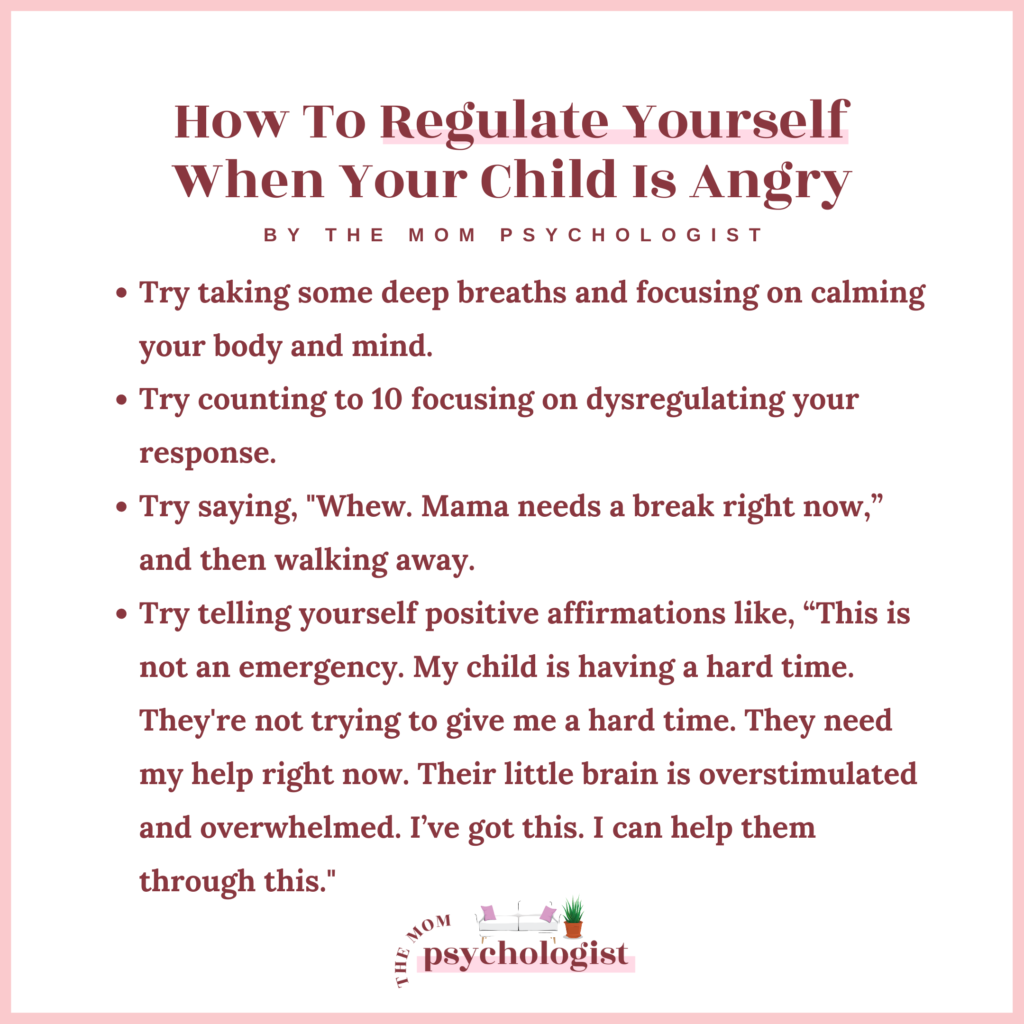
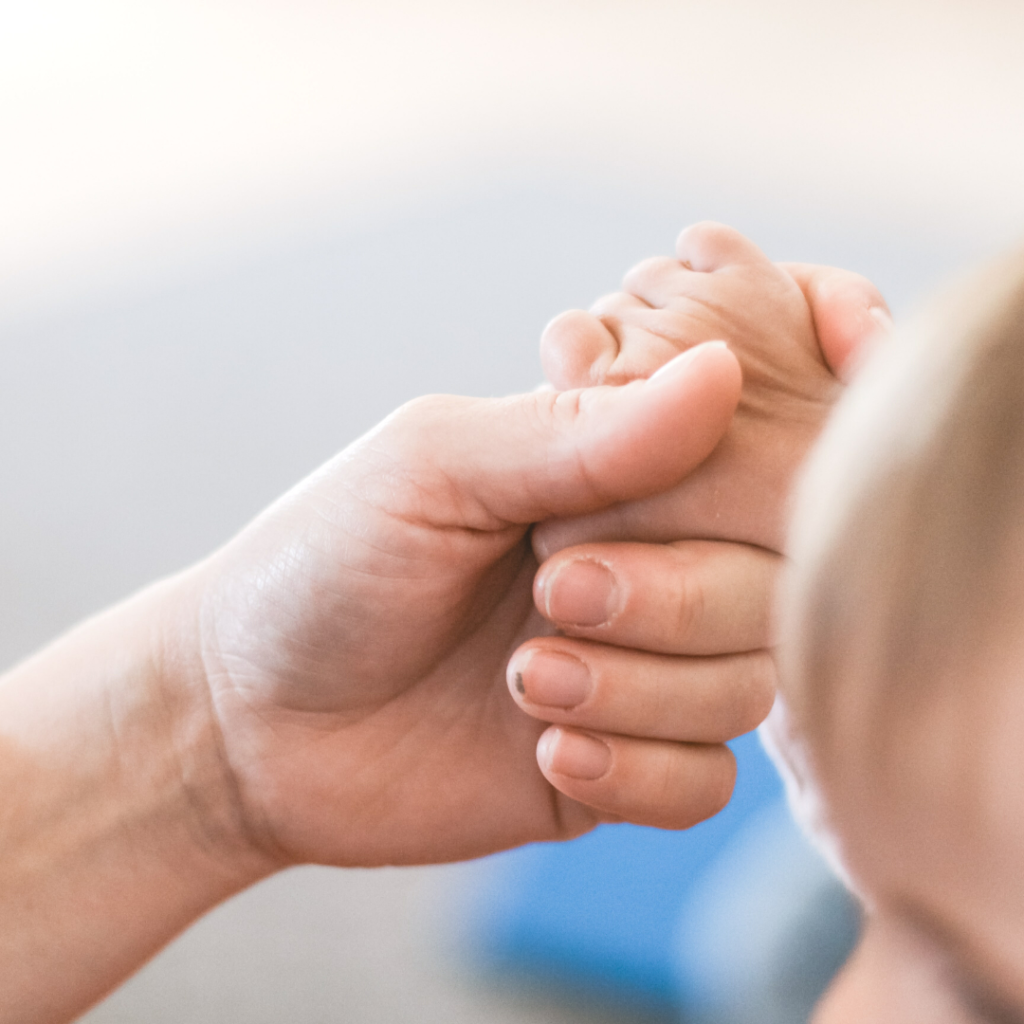
Validate their feelings while redirecting their angry behavior
The second thing you want to do is you want to validate the feeling while redirecting the behavior.
It’s like a one-swoop action. You can say something like, “Ah, I see you want to hit. I see you’re angry right now. It’s okay to be angry, but I can’t let you hit me. Our bodies are not for hurting. That hurts my body. I can’t let you do that,” while you have your hand out if they’re coming to swing at you or somebody else.
You always have yYou always have your hand out in a very calm, matter-of-fact. “Whoop, I’m that calm, confident leader. I’m coming in,” while taking deep breaths and saying your mantras.
Give your toddler/preschooler healthy options to release their feelings
Suppressed emotions don’t go away. All they do is get expressed in other ways, and commonly for young kids, they get expressed through other misbehavior. So you want to take this a step further by giving them healthy options to release their feelings.
There are many things you can do at these moments. Every kid is going to be a bit different. What may work today might not tomorrow, so you’re going to have to do some trial and error.
Give them some options because, even if those options don’t work, what you’re telling your child is that it’s okay to feel these feelings.
Tell your children that. “Feelings come and go, and it’s okay to get angry. It’s okay to get sad. Let’s find a healthy way to get that feeling out, okay?”
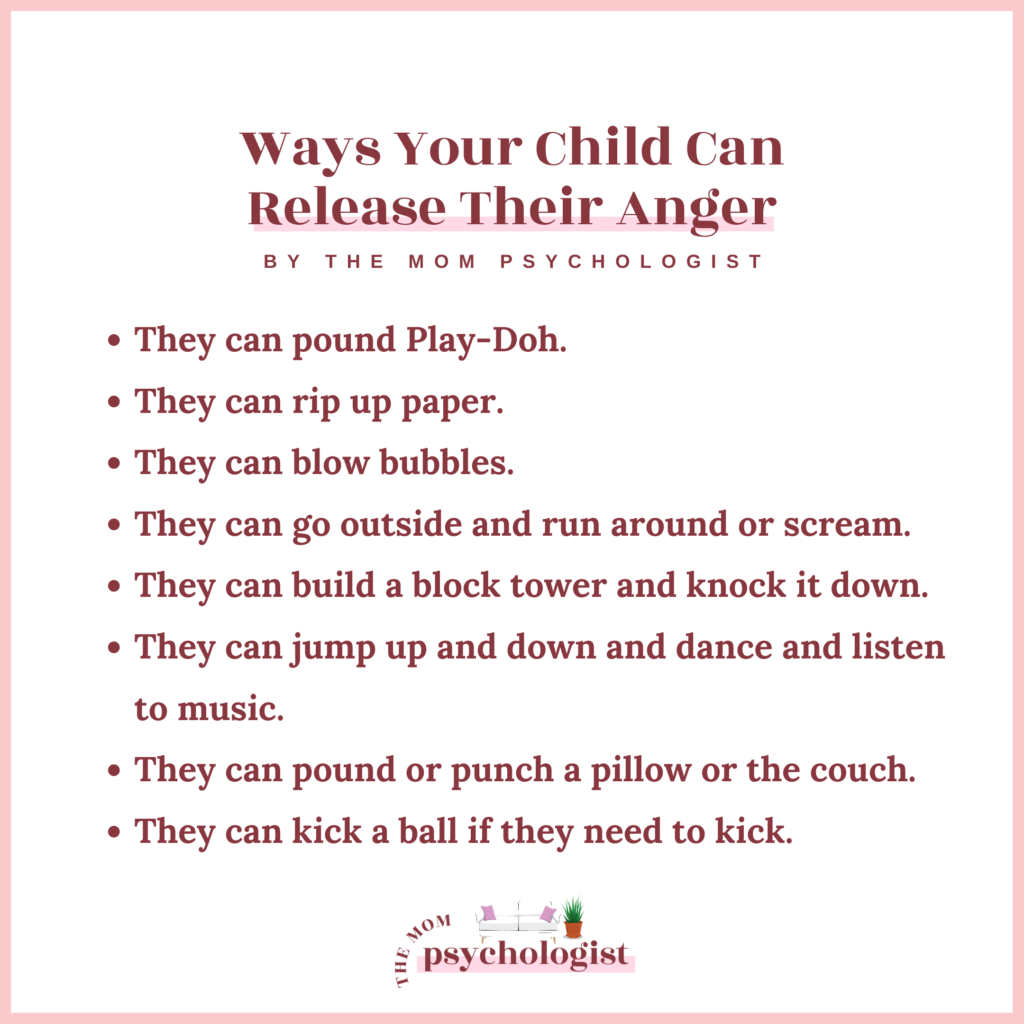
And you want to help walk them through this. “It’s okay. Let me help you get that energy out because I know you’re feeling frustrated. Let’s get that out, bud.”
And it’s that subtle energy of, “Look, I’m not intimidated by your big feelings. I’m not taking them personally. It’s not about me, it’s about you getting emotionally flooded, so I’m going to help you with that, bud. Here we go. This is what we’re going to do, okay?”
And if during that process they get aggressive towards you, do the same process. “I can’t let you hit. Bodies are not for hitting. That hurts my body. Let’s keep pounding that Play-Doh, okay? Let’s keep kicking that ball.”
And then you want to praise them for doing that.
Keep it light, keep it positive. Be their anchor. Be the calm presence they need.
Here’s the thing: Children learn to regulate their bodies and their feelings through us.
We have to help them – it’s called co-regulate – before they can learn how to regulate on their own.
A lot of this process needs to be walked through.
Suppressed feelings don’t go away. Telling your child, “Don’t hit me! Stop that! Knock it off, you’re being bad. Go to your room!” doesn’t help them.
Now they’ve learned, “Wow, it’s a scary place to have big feelings. And now I’m all alone in my big feelings, and I’m bad for having my feelings.”
And that’s not what we want to teach them because they’re going to grow up and be adults and they’re going to have big feelings. It’s the human experience to have big feelings and pain.
We all experience pain, and you want to give your child that gift of being able to walk through life and handle the pain that inevitably will come.
Leave me a comment below about your own experiences or questions you have. I’d love to hear from you.
Rooting for you,
Dr. Jazmine
P.S. Want more help? Check out my free discipline workshop, How to Get Your Kids to Listen Without Yelling, for a deeper dive into discipline and setting consequences with intention and respect.
Love this? Don’t lose it! Click below and save to your Pinterest!
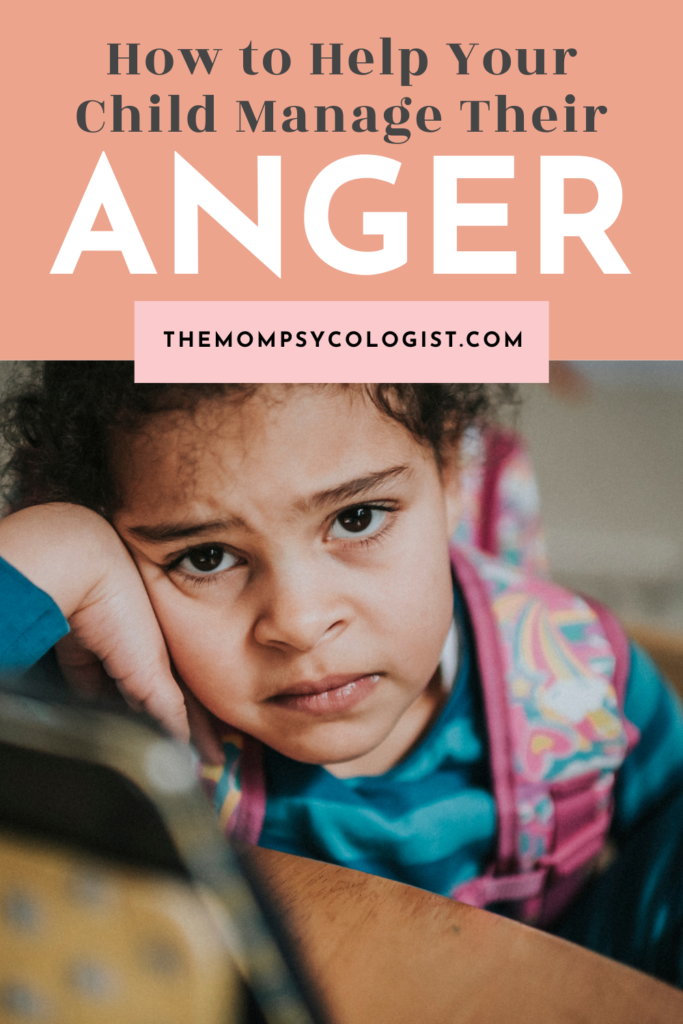
Leave a Reply Cancel reply
Copyright The Mom Psychologist® 2025
grab my free script pack!
explore
work with me
information
About
Blog
YouTube
Podcast
TMP University (Coaching)
Privacy Policy
Terms of Use
Product Disclaimer
Contact
TMP Times (Newsletter)
I will definitely give it a try!!! Thank you !
I am absolutely sure that I never learned this as a child. No wonder I’m having such trouble with it. I will make a real effort to figure out how to regulate myself so that I can co-regulate and teach this valuable life skill.
[…] children’s emotional health. In a blog post about helping children manage their anger, clinical psychologist Dr. Jazmine McCoy writes, “Children learn to regulate their bodies and their feelings through us. We have to help them […]
[…] maintain children’s emotional health. In a blog post about helping kids manage their anger, clinical psychologist Dr. Jazmine McCoy writes, “Children learn to regulate their body and their feelings through us. We have to help them, […]
[…] support children’s emotional health. In a blog post about helping children manage their anger, clinical psychologist Dr. Jazmine McCoy writes, “Children learn to regulate their bodies and their feelings through us. We have to help them – […]
[…] support children’s emotional health. In a blog post about helping children manage their anger, clinical psychologist Dr. Jazmine McCoy writes, “Children learn to regulate their bodies and their feelings through us. We have to help them – […]
[…] children’s emotional health. In a blog post about helping children manage their anger, clinical psychologist Dr. Jazmine McCoy writes, “Children learn to regulate their bodies and their feelings through us. We have to help them […]
[…] emotional well being. In a weblog publish about serving to youngsters handle their anger, clinical psychologist Dr. Jazmine McCoy writes, “Children learn to regulate their bodies and their feelings through us. We have to help them – […]
[…] children’s emotional health. In a blog post about helping children manage their anger, clinical psychologist Dr. Jazmine McCoy writes, “Children learn to regulate their bodies and their feelings through us. We have to help […]
[…] support children’s emotional health. In a blog post about helping children manage their anger, clinical psychologist Dr. Jazmine McCoy writes, “Children learn to regulate their bodies and their feelings through us. We have to help them – […]
[…] support children’s emotional health. In a blog post about helping children manage their anger, clinical psychologist Dr. Jazmine McCoy writes, “Children learn to regulate their bodies and their feelings through us. We have to help them – […]
[…] support children’s emotional health. In a blog post about helping children manage their anger, clinical psychologist Dr. Jazmine McCoy writes, “Children learn to regulate their bodies and their feelings through us. We have to help them – […]
[…] may require a more intense physical release. On her website, Dr. McCoy suggests letting children pound Play-Doh, rip up paper or build a block tower and knock […]
[…] may require a more intense physical release. On her website, Dr. McCoy suggests letting children pound Play-Doh, rip up paper or build a block tower and knock […]
[…] may require a more intense physical release. On her website, Dr. McCoy suggests letting children pound Play-Doh, rip up paper or build a block tower and knock […]
[…] may require a more intense physical release. On her website, Dr. McCoy suggests letting children pound Play-Doh, rip up paper or build a block tower and knock […]
[…] may need more severe physical release. On its website, Dr. McCoy suggests that children pound Play-Doh, tear paper or build a block tower and tear it […]
[…] may require a more intense physical release. On her website, Dr. McCoy suggests letting children pound Play-Doh, rip up paper or build a block tower and knock […]
[…] may require a more intense physical release. On her website, Dr. McCoy suggests letting children pound Play-Doh, rip up paper or build a block tower and knock […]
[…] may require a more intense physical release. On her website, Dr. McCoy suggests letting children pound Play-Doh, rip up paper or build a block tower and knock […]
[…] may require more vigorous physical release. On her website, Dr. McCoy suggests letting the kids smash Play-Doh, tear the paper, or build a block tower and […]
[…] may need more intense physical relaxation. On her website, Dr. McCoy invites children to rub Play-Doh, tear paper, or build a tower of blocks and knock it […]
[…] may require a more intense physical release. On her website, Dr. McCoy suggests letting children pound Play-Doh, rip up paper or build a block tower and knock […]
[…] may require a more intense physical release. On her website, Dr. McCoy suggests letting children pound Play-Doh, rip up paper or build a block tower and knock […]
[…] may require a more intense physical release. On her website, Dr. McCoy suggests letting children pound Play-Doh, rip up paper or build a block tower and knock […]
[…] may require a more intense physical release. On her website, Dr. McCoy suggests letting children pound Play-Doh, rip up paper or build a block tower and knock […]
[…] could require a extra intense bodily launch. On her web site, Dr. McCoy suggests letting youngsters pound Play-Doh, rip up paper or construct a block tower and […]
[…] may require a more intense physical release. on his website, Dr. McCoy suggests letting kids pound Play-Doh, rip out paper or build a block tower and drop it […]
[…] may require a more intense physical release. On her website, Dr. McCoy suggests letting children pound Play-Doh, rip up paper or build a block tower and knock […]
[…] might require a extra intense bodily launch. On her web site, Dr. McCoy suggests letting kids pound Play-Doh, rip up paper or construct a block tower and knock […]
[…] might require a extra intense bodily launch. On her website, Dr. McCoy suggests letting kids pound Play-Doh, rip up paper or construct a block tower and knock […]
[…] might require a extra intense bodily launch. On her website, Dr. McCoy suggests letting kids pound Play-Doh, rip up paper or construct a block tower and knock […]
[…] may require a more intense physical release. On her website, Dr. McCoy suggests letting children pound Play-Doh, rip up paper or build a block tower and knock […]
[…] deep breathing exercises, Dr. Anderson said.Others may require a more intense physical release. On her website, Dr. McCoy suggests letting children pound Play-Doh, rip up paper or build a block tower and knock […]
[…] might require a extra intense bodily launch. On her website, Dr. McCoy suggests letting kids pound Play-Doh, rip up paper or construct a block tower and knock […]
[…] may require a more intense physical release. On her website, Dr. McCoy suggests letting children pound Play-Doh, rip up paper or build a block tower and knock […]
[…] deep breathing exercises, Dr. Anderson said.Others may require a more intense physical release. On her website, Dr. McCoy suggests letting children pound Play-Doh, rip up paper or build a block tower and knock […]
[…] may require a more intense physical release. On her website, Dr. McCoy suggests letting children pound Play-Doh, rip up paper or build a block tower and knock […]
[…] pueden requerir una liberación física más intensa. En su página web, McCoy sugiere dejar a los niños golpear plastilina o rasgar papel o construir una torre y […]
[…] might require a extra intense bodily launch. On her website, Dr. McCoy suggests letting kids pound Play-Doh, rip up paper or construct a block tower and knock […]
[…] may require a more intense physical release. On her website, Dr. McCoy suggests letting children pound Play-Doh, rip up paper or build a block tower and knock […]
[…] may require a more intense physical release. On her website, Dr. McCoy suggests letting children pound Play-Doh, rip up paper or build a block tower and knock […]
[…] may require more intense physical release. on its website, Dr. McCoy suggests kids pound Play-Doh, tear paper or build a block tower and knock it down. They […]
[…] may require a more intense physical release. On her website, Dr. McCoy suggests letting children pound Play-Doh, rip up paper or build a block tower and knock […]
[…] may require a more intense physical release. On her website, Dr. McCoy suggests letting children pound Play-Doh, rip up paper or build a block tower and knock […]
[…] may require a more intense physical release. on his website, Dr. McCoy suggests letting kids pound Play-Doh, rip out paper or build a block tower and drop it […]
[…] might require a extra intense bodily free up. On her web site, Dr. McCoy suggests letting kids pound Play-Doh, rip up paper or construct a block tower and knock […]
[…] may require a more intense physical release. On her website, Dr. McCoy suggests letting children pound Play-Doh, rip up paper or build a block tower and knock […]
[…] may require a more intense physical release. On her website, Dr. McCoy suggests letting children pound Play-Doh, rip up paper or build a block tower and knock […]
[…] may require a more intense physical release. On her websiteDr. McCoy suggests letting children pound Play-Doh, rip up paper or build a block tower and knock it […]
[…] may require a more intense physical release. On her website, Dr. McCoy suggests letting children pound Play-Doh, rip up paper or build a block tower and knock […]
[…] could require a extra intense bodily launch. On her websiteMcCoy suggests letting youngsters bomb Play-Doh, shred paper or construct a block tower and produce […]
[…] deep breathing exercises, Dr. Anderson said.Others may require a more intense physical release. On her website, Dr. McCoy suggests letting children pound Play-Doh, rip up paper or build a block tower and knock […]
[…] daha yoğun bir fiziksel salıverme gerektirebilir. onun web sitesinde, Dr. McCoy, çocukların Play-Doh’a vurmalarına, kağıtları yırtmalarına veya bir blok […]
[…] assist kids’s emotional well being. In a weblog publish about serving to kids handle their anger, medical psychologist Dr. Jazmine McCoy writes, “Kids study to control their our bodies and their emotions by way of us. We have now to assist […]